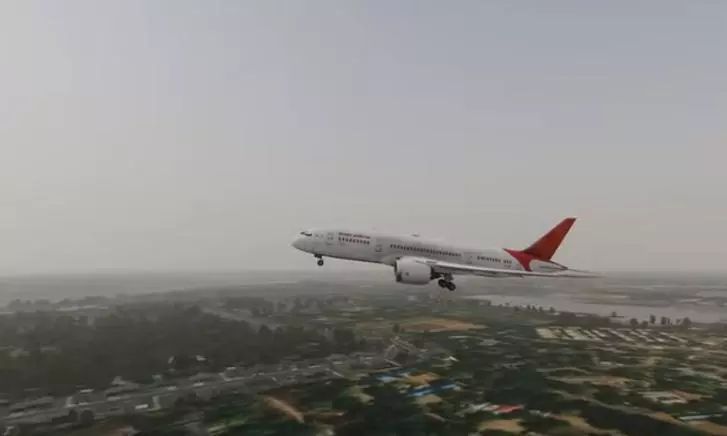Failure of Both Engines or a Bird Hit Could Have Led to Plane Crash
First-ever fatal Boeing 787-8 crash may be due to a bird hit or a rare engine flameout after takeoff

Hyderabad, Ahmedabad, New Delhi: Experts puzzled over the reasons that led to the first fatal crash of the Dreamliner, Boeing 787-8, which was introduced over a decade ago. It was suggested that an unprecedented failure of both engines or a bird hit soon after take-off could be among the probable causes.
PTI quoted three senior pilots of wide-body two-aisle aircraft, such as the Dreamliner, who are also instructors, and videos of the crash, available publicly, showed that the plane could not generate the required thrust needed for takeoff.
In Hyderabad, a pilot inspector said that the situation appeared to have escalated too quickly for the pilots to handle. “When accidents happen at low altitude just after take-off, there’s hardly any time for the pilot to take full control or carry out all recovery steps,” the instructor explained.
Another chief instructor said “Pilots are trained for a wide range of emergencies, but not every situation can be managed, especially if all engines are impacted. We must wait for the official investigation to understand what really went wrong today.”
The specific reasons for the crash of the aircraft, scheduled to fly to London Gatwick, will be known only after the completion of the detailed probe by the Aircraft Accident Investigation Bureau (AAIB).
Experts mentioned the possible causes based on the available visuals of the aircraft as it went down.
One of the commanders said it did not seem to be the case of one engine failure because in such a scenario, the aircraft would have been out of control; the aircraft was stable.
“So, there is the possibility of both the engines failing... There could have been a loss of thrust in both engines. But these are only possibilities,” a commander said, according to PTI, adding that from the images.
A second commander mentioned that the way the aircraft went down indicated that there was a lack of thrust in both engines. “This could happen if both engines had flameout due to a bird hit,” he said.
The third commander said the aircraft's both engines might have lost power. One engine might have failed and possibly due to the landing gear being not retracted after take-off, the second engine might not have had adequate power.
While there are suggestions that the aircraft's weight could have been higher than the permissible limit, the commander said if that was the case, then the take-off itself would not have been possible.
The weight of the aircraft determines the V1 speed or take-off speed. If the speed that the pilots calculated before take-off is lower than required, the engines will struggle to get the plane airborne.
A Mayday call was given to the air traffic controller soon after the take-off but thereafter there was no signals from the aircraft nor did the pilots respond to calls made by the air traffic controller, aviation regulator DGCA said.
“Aircraft, immediately after departure from runway 23, fell on ground outside the airport perimeter,” the Directorate General of Civil Aviation (DGCA) said in a statement.
In a video message, Air India CEO and MD Campbell Wilson said, “Investigations will take time but anything we can do now we are doing”.

